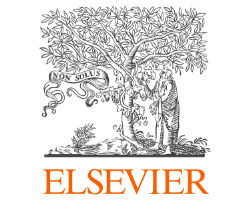Obstetrical Factors in Postpartum Depression: A Correlational Study at General Hospitals of Banjarmasin
Abstract
Problematic health areas such as maternal and child health is one of the target areas to be addressed so that by 2030, reduction of maternal mortality by less than 70 per 100,000 live births will be attained. Mental illness that happens in postpartum women is significantly associated with morbidity and disability. There are about 10% of pregnant women and 13% of mothers who experience mental disorder, especially depression worldwide. This study aimed to determine and analyze the obstetrical factors associated with postpartum depression. This study used quantitative design with descriptive survey method. A total of 88 participants were included coming from the two General Hospital in Banjarmasin, South Kalimantan, Indonesia. EPDS, BDI-II, and PPDRF checklist were used. It was found out that there is no significant association between the level of depression and desire to be pregnant, complication in pregnancy, and history of abortion. However, there is a significant relationship between participants’ level of depression and their experience of menstrual problems. There are 15 or 17% mothers who suffered severe postpartum depression in both hospitals. This needs to be a concern for health workers because postpartum depression mothers could have a poor relationship with children, difficulty meeting their daily needs, caring for children, or even developing into postpartum psychosis.
Downloads
References
United Nations (UN), Sustainable Development Goals: 17 goals to transform our world. (n.d). [Online]. Available: www.un.org/sustainabledevelopment/health/. [Accessed: October 2019].
J. H. Park, W. Karmaus, and H. Zhang, “Prevalence of and risk factors for depressive symptoms in Korean women throughout pregnancy and in postpartum depression,” Asian Nursing Research, vol. 9, pp. 219-225, 2015. doi: 10.1016/j.anr.2015.03.004. [Accessed: October 2019].
A. Josefsson, C. Larsson, G. Sydsjo, and P. O. Nylander, “Temperament and character in women with postpartum depression,” Arch Womens Ment Health, vol. 10, pp. 3-7, 2007. doi: 10.1007/s00737-006-0159-3. [Accessed: October 2019].
A. Pillitteri, Maternal & child health nursing: Care of the childbearing & childrearing family (7th Ed.). Philippines: Lippincott Williams & Wilkins, 2014.
C. T. Beck, Postpartum depression: A metasynthesis. Qual Health Res, vol. 12, no. 4, pp. 453-472, 2002. doi: 10.1177/104973202129120016. [Accessed: October 2019].
American Psychological Association (APA), What is postpartum depression & anxiety, 2017. [Online]. Available: www.apa.org/pi/women/resources/reports/postpartum_depression.aspx. [Accessed: October 2019].
Centers for Disease Control and Prevention (CDC), Postpartum depression, 2017. [Online]. Available: http:// www.cdc.gov/reproductivehealth/depression/index.htm. [Accessed: October 2019].
A. Haque, A. Namawar, and K. A. Breene, “Prevalence and risk factors of postpartum depression in Middle Eastern/Arab women,” Journal of Muslim Mental Health, vol. 9, no. 1, pp. 65-84, 2015. doi: dx.doi.org/10.3998/jmmh.10381607.0009.104. [Accessed: October 2019].
I. K. P. A. Dira and A. A. S. Wahyuni, “Prevalensi dan faktor risiko depresi postpartum di Kota Denpasar menggunakan Edinburg Postnatal Depression Scale,” E-JURNAL MEDIKA, vol. 5, no. 7, pp. 1-5, 2016. [Online]. Available: http:// ojs.unud.ac.id/index.php/eum. [Accessed: October 2019].
A. Humayun, I. I. Haider, N. Imran, H. Iqbal, and N. Humayun, “Antenatal depression and its predictors in Lahore, Pakistan,” East Mediterr Health J., vol. 19, no. 4, pp. 327-332, 2013 Antenatal_depression_and_its_predictors_in_Lahore_Pakistan. [Online]. Available: https:// www.researchgate.net/publication/249011231. [Accessed: October 2019].
M. Patel, R. K. Bailey, S. Jabeen, S. Ali, N. C. Barker, and K. Osiezagha, “Postpartum depression: A review,” J Health Care Poor Underserved, vol. 23, no. 2, pp. 534-542, 2012. doi: 10.1353/hpu.2012.0037. [Accessed: October 2019].
N. J. Klossner and N. T. Hatfield, Introductory maternity & pediatric nursing (2nded.). Philadelphia: Lippincott Williams & Wilkins, 2010.
I. M. Bobak and M. D. Jensen, Essential of maternity nursing. St. Louis, MO: Mosby, 1991.
J. Norliza, S. A. S. Khuzaimah, A. S. Emad, and S. Norimah, “Depression and coping strategies used by postnatal mothers during the postpartum period,” MJP, 2014. [Online]. Available: https:// www.researchgate.net/publication/274569348_Depression_and_Coping_Strategies_Used_by_Postnatal_Mothers_During_the_Postpartum_Period. [Accessed: October 2019].
National Institute of Mental Health (NIMH), Postpartum depression facts, (n.d). [Online]. Available: https:// www.nimh.nih.gov/health/publications/postpartum-depression-facts/index. shtml. [Accessed: October 2019].
E. J. Corwin, J. Brownstead, N. Barton, S. Heckard, and K. Morin, “The impact of fatigue on the development of postpartum depression,” JOGNN, vol. 34, pp. 577-586, 2005. doi: 10.1177/0884217505279997. [Accessed: October 2019].
J. Y. Ko, K. M. Rockhill, V. T. Tong, B. Morrow, and S. L. Farr, “Trends in postpartum depressive symptoms-27 states, 2004, 2008, and 2014,” Centers for Disease Control: MMWR, vol. 66, no. 6, pp. 154-158, 2017.
V. Sharma and P. Sharma, “Postpartum depression: Diagnostic and treatment issues,” J Obstet Gynaecol Can, vol. 34, no. 5, pp. 436-442, 2012.
C. B. Nemeroff, “Understanding the pathophysiology of postpartum depression: Implications for the development of novel treatments,” Neuron, vol. 59, pp. 185-186, 2008. doi: 10.1016/j.neuron.2008.07.015. [Accessed: October 2019].
L. H. Chaudron, “Postpartum depression: What pediatricians need to know,” Pediatrics in review, vol. 24, no. 5, pp. 154-160, 2003.
E. S. Kurniawan, N. Ratep, and W. Westa, Faktor penyebab depresi pada ibu hamil selama asuhan antenatal setiap trimester. (n.d) [Online]. Available: http:// download.portalgaruda.org/article.php?article=14481&val=970. [Accessed: October 2019].
C. E. Schiller, S. Meltzer-Brody, and D. R. Rubinow, “The role of reproductive hormones in postpartum depression,” CNS Spectr, vol. 20, no. 1, pp. 48-59, 2015. doi: 10.1017/S1092852914000480. [Accessed: October 2019].
C. E. E. Schiller, The hormone withdrawal hypothesis of postpartum depression: a translational approach. Doctoral dissertation, University of Iowa, Iowa, 2011. [Online]. Available: http:// ir.uiowa.edu/cgi/viewcontent.cgi?article=2645&context=etd. [Accessed: October 2019].
S. Brummelte and L. A. M. Galea, “Postpartum depression: Etiology, treatment and consequences for maternal care,” Hormone and Behavior, vol. 77, pp. 153-166, 2016. doi: 10.1016/j.yhbeh.2015.08.008. [Accessed: October 2019].
M. Ghaedrahmati, A. Kazemi, G. Kheirabadi, A. Ebrahimi, and M. Bahrami, “Postpartum depression risk factors: A narrative review,” J Educ Health Promot, vol. 6, no. 60, pp. 4-20, 2017. doi: 10.4103/jhep.jhep_9_16. [Accessed: October 2019].
detik Health, Kehamilan Tidak Direncanakan, Berkah atau Musibah?, 2013. [Online]. Available: https:// health.detik.com/ulasan-khas/2162270/kehamilan-tidak-direncanakan-berkah -atau-musibah. [Accessed: October 2019].
R. Neiger, “Long-term effect of pregnancy complications on maternal health: A review,” J Clin Med, vol. 6, no. 8, pp. 1-12, 2017. doi: 10.3390/jcm6080076. [Accessed: October 2019].
J. L. Cox, J. M. Holden, and R. Sagovsky, “Detection of postnatal depression: Development of the 10-item Edinburg Postnatal Depression Scale,” British Journal of Psychiatry, vol. 150, pp. 782-786, 1987.
M. D. E. De Chavez and M. Capco-Dichoso, “Prevalence of postpartum depression among mothers who delivered in a tertiary hospital,” POGS, vol. 3, no. 38, pp. 15-21, 2014.
A. Lanes, J. L. Kuk, and H. Tamim, “Prevalence and characteristics of postpartum depression symptomatology among Canadian women: A cross-sectional study,” BMC Public Health, vol. 11, no. 302, pp. 1-9, 2011.
WHO, Gender and women’s mental health, 2017. [Online]. Available: http:// www.who.int/mental_health/prevention/genderwomen/en/. [Accessed: October 2019].
R. C. Kessler, P. Berglund, O. Demler, R. Jin, K. R. Merikangas, E. E. Walters, “Lifetime prevalence and age-of-onset distributions of DSM-IV disorders in the National Comorbidity Survey Replication,” Arch Gen Psychiatry, vol. 62, pp. 593–602, 2005.
M. W. O’Hara and A. M. Swain, “Rates and risk of postpartum depression: A meta-analysis,” Int. Rev. Psychiatry, vol. 8, pp. 37-54, 1996. doi: 10.3109/09540269609037816.
D. Kurniasari and Y. A. Astuti, “Hubungan antara karakteristik ibu, kondisi bayi dan dukungan social suami dengan postpartum blues pada ibu dengan persalinan SC di Rumah Sakit Umum Ahmad Yani Metro Tahun 2014,” Jurnal Kesehatan Holistik, vol. 9, no. 3, pp. 115-125, 2015.
K. Wijayanti, F. A. Wijayanti, and E. Nuryanti, “Gambaran faktor-faktor risiko postpartum blues di Wilayah Kerja Puskesmas Blora,” Jurnal Kebidanan, vol. 2, no. 5, 2013.
B. Major, M. Appelbaum, L. Beckman, M. A. Dutton, N. F. Russo, and C. West, “Abortion and mental health: Evaluating the evidence,” American Psychological Association, vol. 64, no. 9, pp. 863-890, 2009. doi: 10.1037/a0017497. [Accessed: October 2019].
A. A. Kadir, M. N. M. Daud, M. J. Yaacob, and N. H. N. Hussain, “Relationship between obstetric risk factors and postnatal depression in Malaysian Women,” International Medical Journal, vol. 16, no. 2, pp. 101-106, 2009.
Y. J. Lee, S. W. Yi, D. H. Ju, S. S. Lee, W. S. Sohn, and I. J. Kim, “Correlation between postpartum depression and premenstrual dysphoric disorder: Single center study,” Obstet Gynecol Sci, vol. 58, no. 5, pp. 353–358, 2015. doi: 10.5468/ogs.2015.58.5.353.
M. M. Buttner, S. L. Mott, T. Pearlstein, S. Stuart, C. Zlotnick, and M. W. O’Hara, “Examination of premenstrual symptoms as a risk factor for depression in postpartum women,” Arch Womens Ment Health, vol. 16, pp. 219-225, 2013. doi: 10.1007/s00737-012-0323-x. [Accessed: October 2019].





















